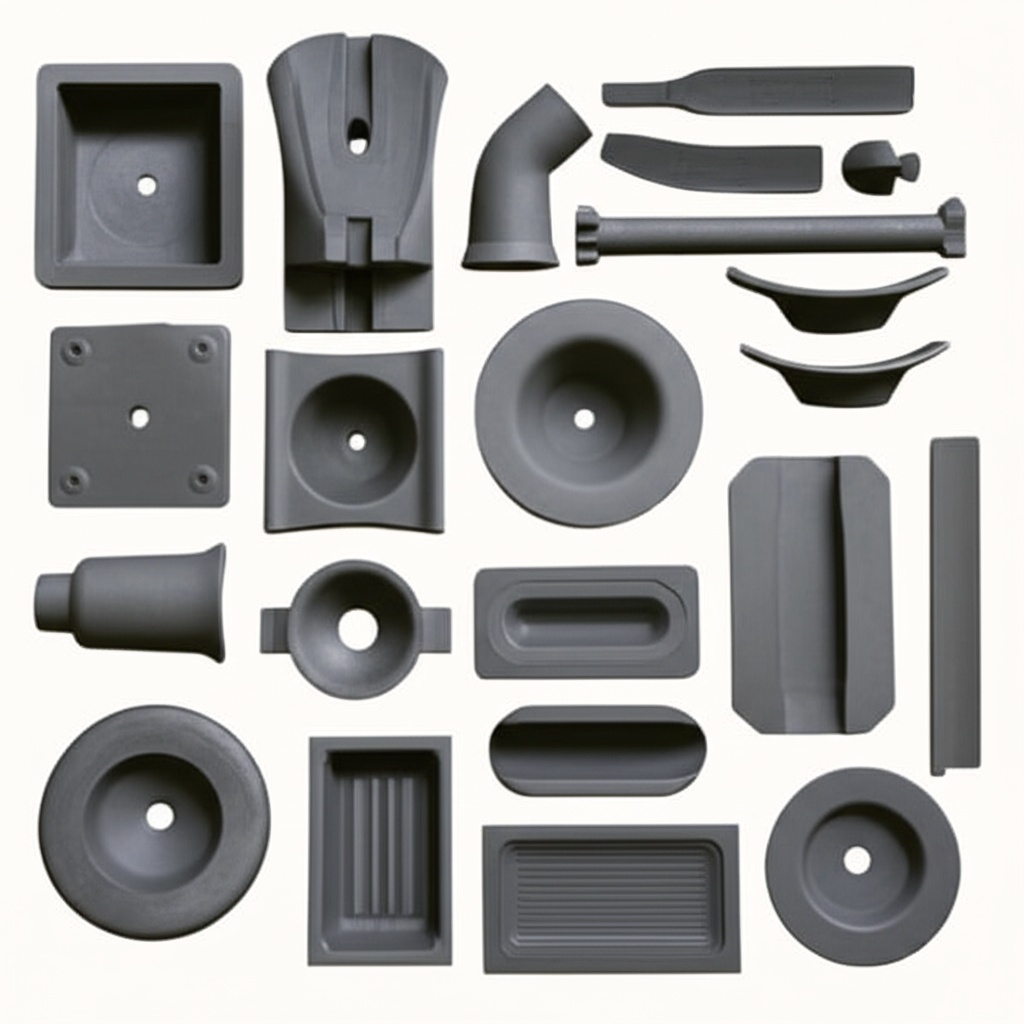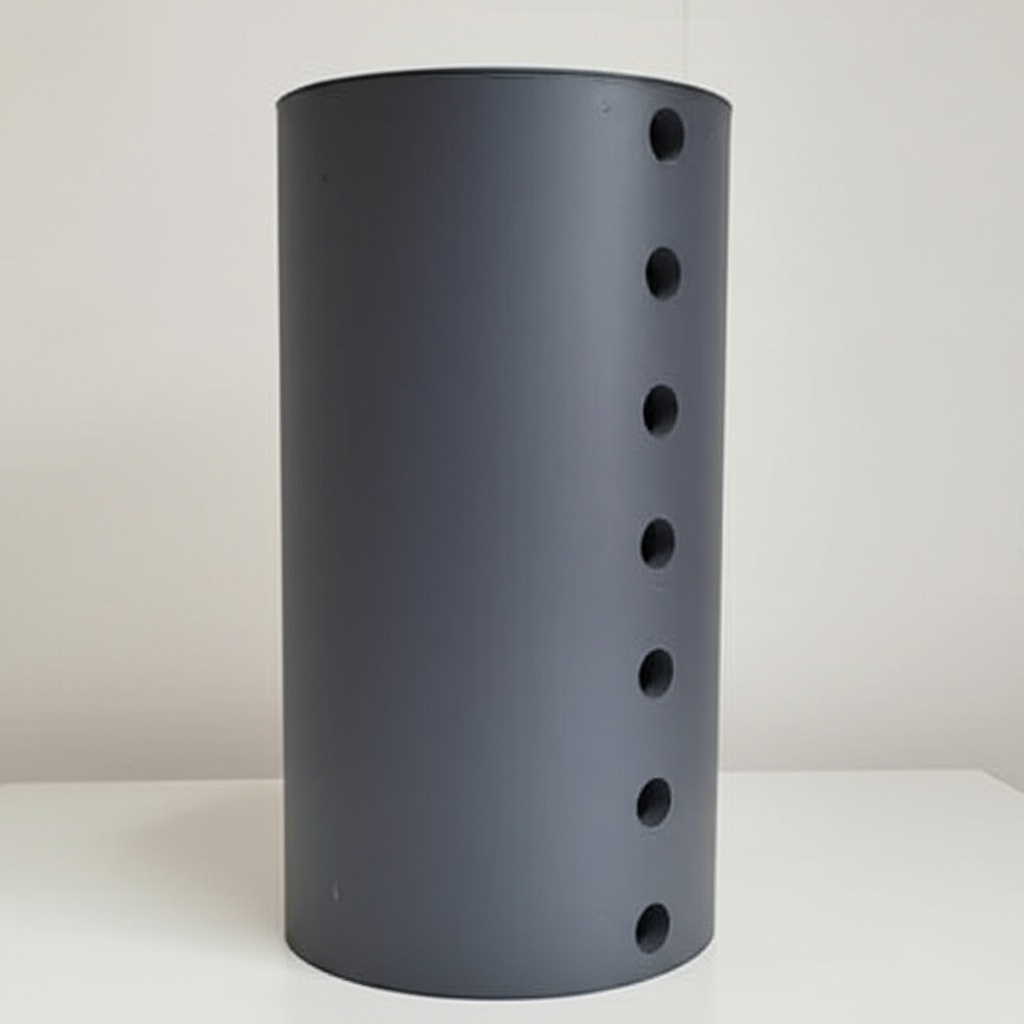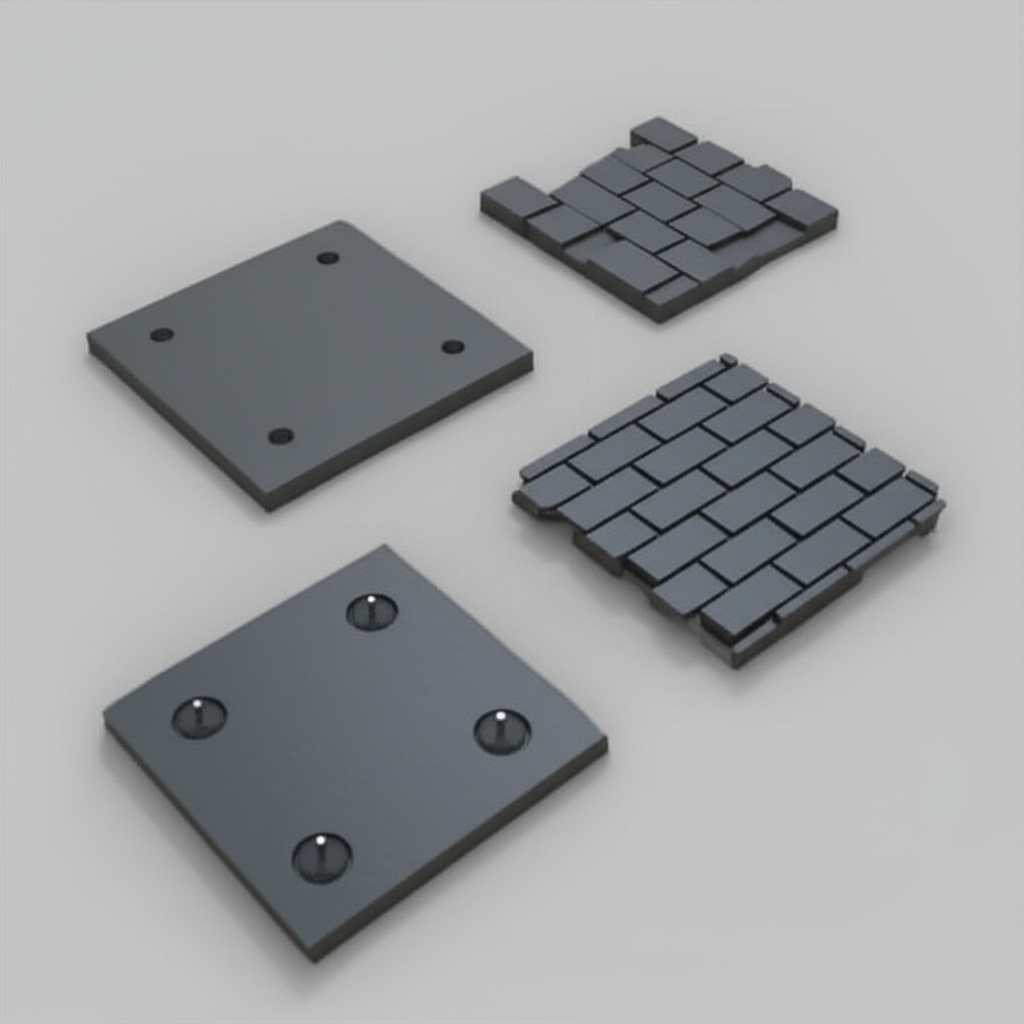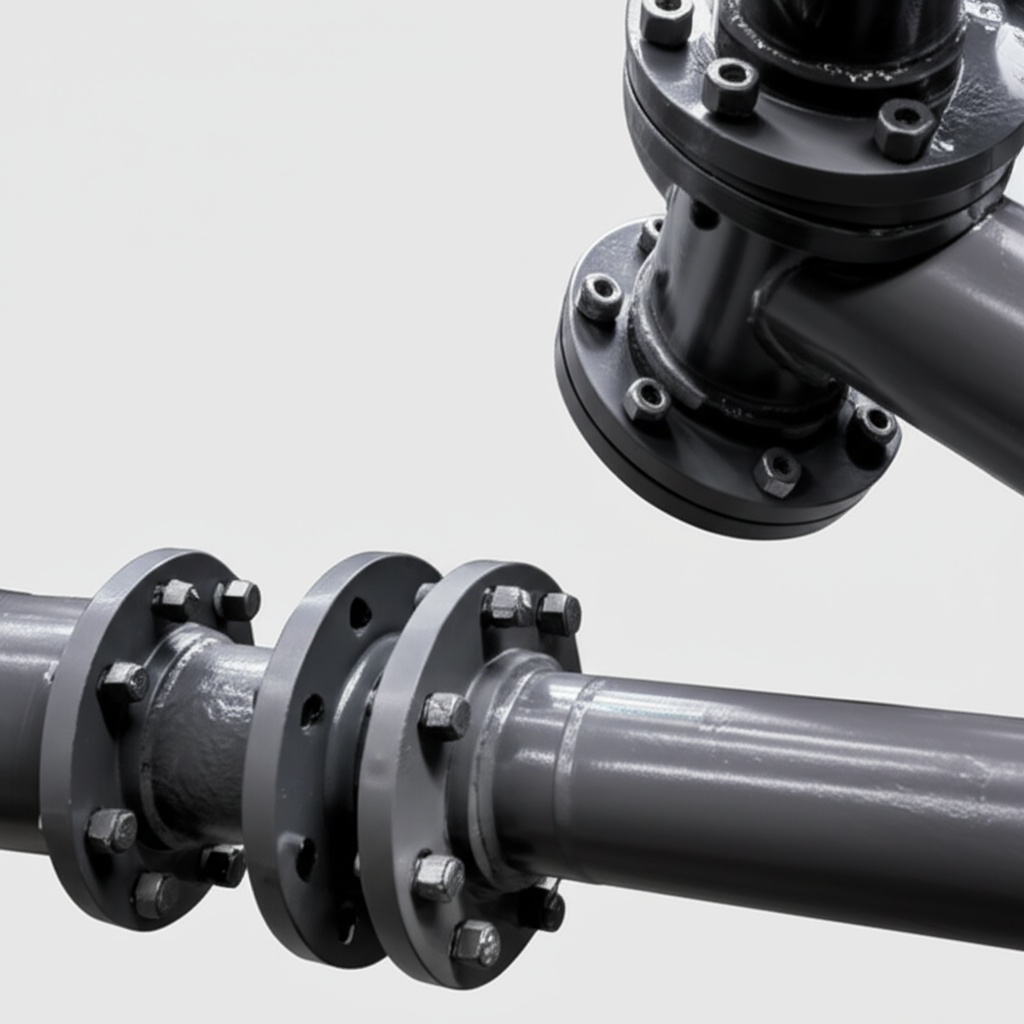Brazilian SiC Manufacturers: Who to Contact

Share
Brazilian SiC Manufacturers: Who to Contact
In the rapidly evolving landscape of advanced materials, silicon carbide (SiC) stands out as a material of unparalleled performance, critical for industries demanding extreme durability, high thermal conductivity, and superior electrical properties. From high-power electronics to aerospace components, the demand for custom silicon carbide products is soaring. While the global market offers numerous options, finding the right partner, especially for silicon carbide manufacturers in Brazil, requires a discerning approach. This blog post will guide you through the intricacies of custom SiC solutions and help you identify reliable suppliers in this specialized field.
What are Custom Silicon Carbide Products?
Custom silicon carbide products are engineered components meticulously designed and fabricated to meet the exact specifications of a particular application. Unlike off-the-shelf solutions, custom SiC parts offer optimized performance for demanding environments. These advanced technical ceramics are crucial for industries requiring exceptional thermal resistance, wear resistance, corrosion resistance, and electrical insulation or conductivity. Their superior properties make them indispensable in applications where conventional materials fail.
Main Applications of Custom SiC Across Industries
The unique properties of silicon carbide enable its use across a diverse range of critical industries. Its robust nature provides solutions for some of the most challenging operating conditions:
- Semiconductors: SiC wafers and components are vital for high-power devices, enabling faster switching speeds, higher breakdown voltages, and improved efficiency in power modules, inverters, and converters.
- Automotive: Used in electric vehicle (EV) power electronics, on-board chargers, and inverters, SiC significantly enhances efficiency and extends range. Its wear resistance also makes it suitable for brake discs and engine components.
- Aerospace: For high-temperature applications like jet engine components, rocket nozzles, and thermal protection systems, SiC offers lightweight and high-strength solutions capable of withstanding extreme conditions.
- Power Electronics: SiC devices are revolutionizing power conversion for everything from industrial motor drives to renewable energy systems, offering superior performance over silicon-based alternatives.
- Renewable Energy: Essential in solar inverters, wind turbine converters, and energy storage systems, SiC improves efficiency and reliability, contributing to a more sustainable energy infrastructure.
- Metallurgy: SiC is used for furnace linings, crucibles, and specialized tooling due to its excellent thermal shock resistance and chemical inertness at high temperatures.
- Defense: Found in lightweight armor, high-performance optical components, and critical parts for advanced weaponry, leveraging its hardness and strength.
- Chemical Processing: Its extreme corrosion resistance makes SiC ideal for pump seals, valve components, and heat exchangers in harsh chemical environments.
- LED Manufacturing: SiC substrates are used for growing GaN (gallium nitride) epitaxial layers, crucial for high-brightness LEDs.
- Industrial Machinery: Components like bearings, seals, nozzles, and cutting tools benefit from SiC’s extreme hardness and wear resistance, leading to longer service life and reduced maintenance.
- Telecommunications: Used in high-frequency and high-power amplifier applications for faster and more efficient communication systems.
- Oil and Gas: SiC components are employed in downhole tools, pumps, and seals due to their resistance to abrasive fluids and high pressures.
- Medical Devices: For surgical instruments, prosthetic components, and diagnostic equipment requiring biocompatibility, precision, and durability.
- Rail Transportation: In traction systems and power converters for high-speed trains, SiC improves efficiency and reduces weight.
- Nuclear Energy: SiC is being researched for advanced nuclear reactor components due to its radiation resistance and high-temperature stability.
Why Choose Custom Silicon Carbide?
The advantages of opting for custom silicon carbide components are substantial, particularly for applications pushing the boundaries of material performance:
- Unmatched Thermal Resistance: SiC maintains its mechanical properties and structural integrity at temperatures exceeding 1,500°C.
- Exceptional Wear Resistance: Its extreme hardness (second only to diamond) provides outstanding resistance to abrasion and erosion, extending component lifespan.
- Superior Chemical Inertness: SiC is highly resistant to a wide range of acids, alkalis, and corrosive gases, making it ideal for harsh chemical environments.
- High Thermal Conductivity: Enables efficient heat dissipation, critical for high-power electronic devices and thermal management systems.
- High Strength-to-Weight Ratio: Offers excellent structural integrity with reduced weight, beneficial for aerospace and automotive applications.
- Tunable Electrical Properties: Can be engineered to be electrically insulating or semiconducting, offering versatility for various electrical applications.
- Design Optimization: Custom fabrication allows for complex geometries and precise dimensions, ensuring optimal fit and function for specific system requirements.
Recommended SiC Grades and Compositions
Silicon carbide exists in various forms, each with distinct properties suited for different applications:
| SiC Grade/Composition | Key Properties | Typical Applications |
|---|---|---|
| Reaction-Bonded SiC (RBSC) | High strength, excellent wear resistance, good thermal conductivity, low porosity, easily formed into complex shapes. | Kiln furniture, pump components, wear plates, mechanical seals, heat exchangers. |
| Sintered SiC (SSiC) | Extremely high hardness, superior corrosion and wear resistance, high thermal conductivity, high strength at elevated temperatures, fine grain structure. | Mechanical seals, bearings, nozzles, body armor, semiconductor processing equipment. |
| Nitride-Bonded SiC (NBSC) | Good thermal shock resistance, excellent hot strength, moderate corrosion resistance, good for large components. | Kiln furniture, blast furnace liners, burner nozzles. |
| Recrystallized SiC (ReSiC) | High purity, excellent thermal shock resistance, good high-temperature strength, porous. | Furnace components, heating elements, refractory applications. |
| Chemical Vapor Deposition (CVD) SiC | Extremely high purity, theoretical density, superior strength, excellent surface finish, thin coatings. | Semiconductor susceptors, optical components, mirror substrates, nuclear applications. |
Design Considerations for SiC Products
Designing with silicon carbide requires a deep understanding of its unique material characteristics to ensure manufacturability and optimal performance. Key considerations include:
- Material Selection: Choosing the right SiC grade (RBSC, SSiC, etc.) based on the specific application’s thermal, mechanical, and chemical requirements.
- Geometry Limits: SiC can be challenging to machine, so designs should aim for simpler geometries where possible. Avoid sharp corners and abrupt changes in cross-section to mitigate stress concentrations.
- Wall Thickness: Uniform wall thickness is generally preferred to minimize internal stresses during sintering and cooling, which can lead to warping or cracking.
- Stress Points: Identify potential stress points and incorporate design features like generous radii to distribute stress more evenly.
- Joining and Assembly: Consider how SiC components will be joined to other parts, whether through brazing, adhesive bonding, or mechanical fastening, and design accordingly.
- Thermal Expansion: Account for the coefficient of thermal expansion (CTE) of SiC and any mating materials to prevent stress buildup during temperature fluctuations.
Tolerance, Surface Finish & Dimensional Accuracy
Achieving precise tolerances and specified surface finishes in silicon carbide components is crucial for high-performance applications. Due to SiC’s hardness, machining post-sintering can be challenging and costly, making near-net-shape manufacturing highly desirable.
- Achievable Tolerances: Standard tolerances for SiC components often range from $pm 0.5%$ to $pm 1.0%$. However, with advanced grinding and lapping techniques, much tighter tolerances (e.g., $pm 0.01$ mm or even tighter for critical dimensions) can be achieved, albeit at a higher cost.
- Surface Finish Options:
- As-Fired/Sintered: Typically has a matte finish with a relatively rough surface (e.g., Ra $1.6 – 6.3 , mutext{m}$). Suitable for non-critical surfaces or where further processing will occur.
- Ground: Provides a smoother surface (e.g., Ra $0.4 – 1.6 , mutext{m}$) and improved dimensional accuracy.
- Lapped/Polished: Achieves extremely fine surface finishes (e.g., Ra $< 0.1 , mutext{m}$) and very tight flatness, crucial for sealing surfaces, optical components, and wear applications.
- Dimensional Accuracy: High precision is achievable through careful mold design, sintering process control, and post-sintering machining if required. This is particularly important for components with intricate features or those requiring tight fit-ups.
Post-Processing Needs
While silicon carbide components often emerge from sintering ready for use, certain applications demand additional post-processing steps to enhance performance, durability, or functionality:
- Grinding: Precision grinding using diamond abrasive wheels is common for achieving tighter tolerances, specific surface finishes, and complex geometries that cannot be formed during initial processing.
- Lapping and Polishing: Essential for critical sealing surfaces, optical components, or wear parts where extremely flat and smooth surfaces are required to minimize friction and ensure proper sealing.
- Sealing: For porous SiC grades, sealing might be necessary to prevent fluid ingress or to enhance corrosion resistance. Impregnation with resins or glass can be employed.
- Coating: Applying additional coatings (e.g., CVD SiC, nitrides, or carbides) can further enhance surface hardness, wear resistance, chemical inertness, or electrical properties for specific applications.
- Cleaning: Thorough cleaning to remove processing residues is vital, especially for semiconductor and medical applications, where contamination must be avoided.
- Inspection and Quality Control: Non-destructive testing (NDT) methods like ultrasonic inspection or X-ray radiography, along with dimensional metrology, are critical to ensure product quality and integrity.
Common Challenges and How to Overcome Them
Despite its superior properties, working with silicon carbide presents certain challenges:
- Brittleness: SiC is a hard and brittle material, making it susceptible to chipping or fracturing under impact or thermal shock.
- Mitigation: Careful design to avoid sharp corners, proper handling during manufacturing and assembly, and selecting appropriate SiC grades for high thermal shock applications (e.g., those with tailored microstructures).
- Machining Complexity: Its extreme hardness makes machining difficult and costly, requiring specialized diamond tooling and techniques.
- Mitigation: Optimize designs for near-net-shape manufacturing to minimize post-sintering machining. Collaborate closely with suppliers experienced in SiC machining.
- Thermal Shock: While generally good, extreme temperature gradients can still induce stresses leading to failure.
- Mitigation: Design components to minimize thermal stress concentrations, select SiC grades with excellent thermal shock resistance, and implement controlled heating/cooling rates in application environments.
- Cost: Custom SiC components can have a higher upfront cost compared to conventional materials.
- Mitigation: Focus on the total cost of ownership, considering the extended lifespan, reduced downtime, and improved performance that SiC offers, which often leads to long-term savings.
How to Choose the Right SiC Supplier
Selecting a reliable silicon carbide manufacturer is paramount to the success of your project. Look for partners who demonstrate a deep understanding of SiC materials and processes:
- Technical Capabilities: Assess their expertise in various SiC grades, manufacturing processes (e.g., pressing, extrusion, slip casting), and advanced machining techniques. Do they offer engineering support for design optimization?
- Material Options: Ensure they can provide the specific SiC composition (RBSC, SSiC, etc.) that best suits your application’s requirements.
- Quality Control & Certifications: Verify their quality management systems (e.g., ISO 9001, AS9100 for aerospace) and their ability to provide material certifications and traceability.
- Experience & Track Record: Look for a supplier with a proven history of delivering high-quality custom SiC components for industries similar to yours. Review their case studies or client testimonials.
- Research & Development: A supplier committed to R&D is often at the forefront of material advancements and can offer innovative solutions.
- Supply Chain Reliability: For global procurement, consider their logistical capabilities, lead times, and ability to ensure consistent supply.
When considering global partners for custom silicon carbide components, it’s worth noting the significant advancements and concentration of expertise in certain regions. For example, Here is the hub of China’s silicon carbide customizable parts factories. The hub of China’s silicon carbide customizable parts manufacturing is situated in Weifang City of China. This region has been home to over 40 silicon carbide production enterprises of various sizes, collectively accounting for more than 80% of the nation’s total silicon carbide output.
We, Sicarb Tech, have been introducing and implementing silicon carbide production technology since 2015, assisting the local enterprises in achieving large-scale production and technological advancements in product processes. We have been a witness to the emergence and ongoing development of the local silicon carbide industry.
Based on the platform of the national technology transfer center of the Chinese Academy of Sciences, Sicarb Tech belongs to Chinese Academy of Sciences (Weifang) Innovation Park, an entrepreneurial park that collaborates closely with the National Technology Transfer Center of the Chinese Academy of Sciences. It serves as a national-level innovation and entrepreneurship service platform, integrating innovation, entrepreneurship, technology transfer, venture capital, incubation, acceleration, and scientific and technological services.
Sicarb Tech capitalizes on the robust scientific, technological capabilities and talent pool of the Chinese Academy of Sciences . Backed by the Chinese Academy of Sciences National Technology Transfer Center, it serves as a bridge, facilitating the integration and collaboration of crucial elements in the transfer and commercialization of scientific and technological achievements. Moreover, it has established a comprehensive service ecosystem that spans the entire spectrum of the technology transfer and transformation process. This commitment ensures more reliable quality and supply assurance within China.
Sicarb Tech possesses a domestic top-tier professional team specializing in customized production of silicon carbide products. Under our support, 506+ local enterprises have benefited from our technologies. We possess a wide array of technologies, such as material, process, design, measurement & evaluation technologies, along with the integrated process from materials to products. This enables us to meet diverse customization needs. We can offer you higher-quality, cost-competitive customized silicon carbide components in China. You can learn more about our capabilities and commitment to quality by visiting our about us page.
We are also committed to assisting you in establishing a specialized factory. If you need to build a professional silicon carbide products manufacturing plant in your country, Sicarb Tech can provide you with the technology transfer for professional silicon carbide production, along with a full-range of services (turnkey project) including factory design, procurement of specialized equipment, installation and commissioning, and trial production. This enables you to own a professional silicon carbide products manufacturing plant while ensuring a more effective investment, reliable technology transformation, and guaranteed input-output ratio. For inquiries or to discuss your specific needs, please feel free to contact us.
Cost Drivers and Lead Time Considerations
Understanding the factors influencing cost and lead time is crucial for effective project planning:
- Material Grade: Different SiC compositions and purities have varying raw material costs. For example, Sintered SiC (SSiC) tends to be more expensive than Reaction-Bonded SiC (RBSC) due to its higher purity and processing requirements.
- Component Complexity: Intricate geometries, tight tolerances, and highly specialized features significantly increase manufacturing costs due to more complex tooling and longer machining times.
- Volume: Economies of scale generally apply; higher production volumes typically lead to lower unit costs.
- Surface Finish Requirements: Achieving very fine surface finishes (lapping, polishing) adds considerable cost and processing time.
- Post-Processing Needs: Additional steps like grinding, coating, or sealing contribute to the overall cost and extend lead times.
- Tooling Costs: For custom designs, there may be upfront tooling costs for molds or specialized fixtures.
- Lead Time: This can vary widely based on component complexity, material availability, and supplier capacity. Simple parts might have lead times of a few weeks, while highly complex, custom components could take several months. Early engagement with your supplier is recommended.
Frequently Asked Questions (FAQ)
- Q1: What are the primary advantages of SiC over traditional ceramics or metals for high-temperature applications?
- A1: SiC offers superior performance at high temperatures, including much higher strength and stiffness, better thermal shock resistance, and excellent chemical inertness compared to most metals and traditional ceramics. It also maintains its properties at temperatures where many other materials would deform or melt.
- Q2: Is silicon carbide electrically conductive or insulating?
- A2: Silicon carbide can be engineered to be either electrically insulating or semiconducting, depending on its purity and doping. High-purity SiC is an excellent insulator, while controlled doping allows for its use in high-power semiconductor devices.
- Q3: How durable are custom silicon carbide components in abrasive environments?
- A3: Silicon carbide is one of the hardest materials known, making it exceptionally durable in abrasive and erosive environments. Its extreme hardness and wear resistance lead to significantly longer component lifespan compared to many metals or other ceramics, reducing downtime and replacement costs.
Conclusion
Custom silicon carbide products are not just materials; they are strategic investments that unlock new levels of performance and reliability in the most demanding industrial environments. For engineers, procurement managers, and technical buyers in sectors like semiconductors, aerospace, power electronics, and industrial manufacturing, understanding the nuances of SiC and partnering with the right manufacturer is crucial. By leveraging the unique properties of SiC and collaborating with experienced suppliers, you can develop components that exceed conventional limitations, driving innovation and efficiency in your critical applications.

About the Author: Sicarb Tech
We provide clear and reliable insights into silicon carbide materials, component manufacturing, application technologies, and global market trends. Our content reflects industry expertise, practical experience, and a commitment to helping readers understand the evolving SiC landscape.




